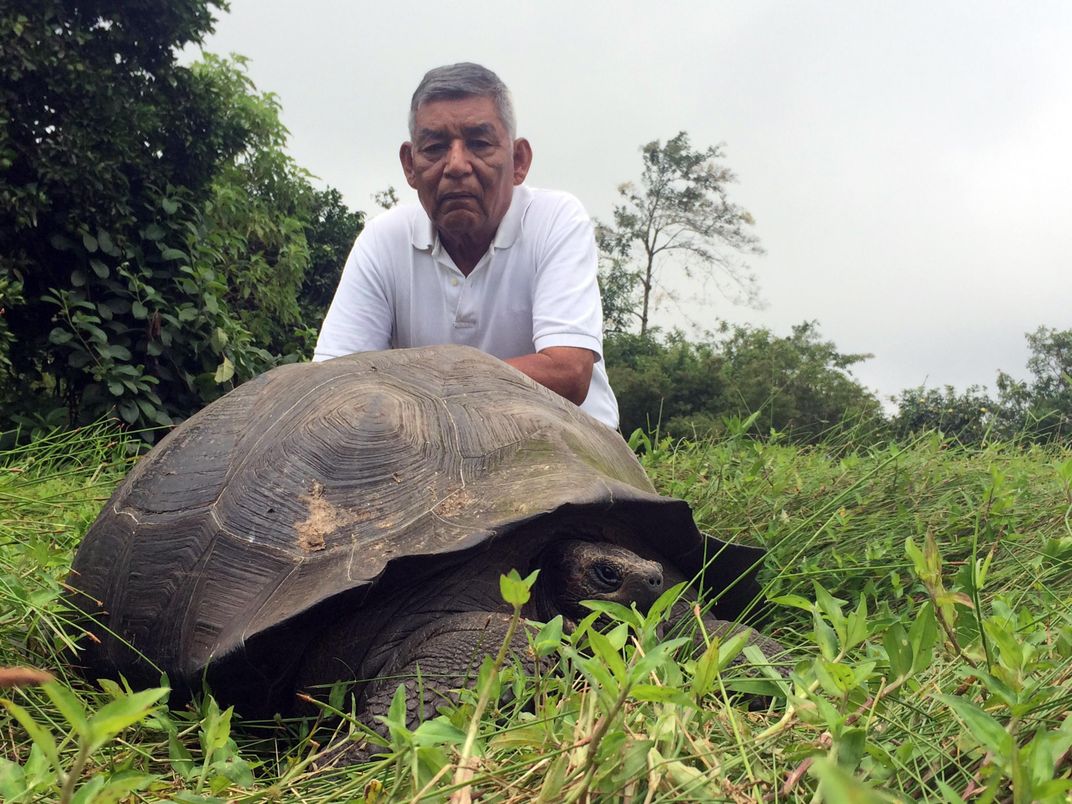New Species of Galapagos Tortoise Found on Santa Cruz Island
The newly recognized reptile was thought to be part of a more populous species of tortoise sharing the island
/https://tf-cmsv2-smithsonianmag-media.s3.amazonaws.com/filer/13/30/133009c2-a73d-4604-b441-82728beb89f6/eastern_santa_cruz_tortoise_1.jpg)
For animals, island life isn’t always a breeze. Survival on remote, ocean-bound outposts like the Galapagos Islands often depends on diversification, with one species breaking into two or more new ones to take advantage of finite resources and reduce competition with neighbors.
The best-known example of this phenomenon, called adaptive radiation, is probably the island's host of finches made famous by Charles Darwin. But like those iconic birds, years of isolation and competition have also split the island's giant tortoises into 15 distinct species.
Now, a new tortoise whose uniqueness was overlooked adds one more name to the Galapagos’ species count, as a team of researchers from Greece, the U.S., Canada and Ecuador announces today in the journal PLOS ONE.
This isn’t the first time scientists have had to rethink the Galapagos tortoise's family tree. In the 19th century, some naturalists argued that the giant land tortoises belonged to multiple unique species, each classified according to island home and shell shape, while others said that despite the differences, the turtles all belonged under a single species umbrella, Chelonoidis nigra.
Although some debate continues today, researchers generally agree that the tortoises comprise 15 species, all within the genus Chelonoidis.
On Santa Cruz Island, a small group of around 250 turtles lives just 12 miles east of another group of about 3,000 tortoises. The eastern animals are more diminutive and possess slightly different shells than their neighbors, Chelonoidis porteri. Other researchers had long noted these variations, but had assumed that both groups still belonged to the same species.
Now, genetic analysis from three museum specimens and over 100 living tortoises from both populations finally revealed the true extent of the animals’ divergence. The two groups are distinct species, the researchers found, and are as different from one another as other species that live on separate islands.
In fact, the Santa Cruz tortoises are not even one another’s closest relatives. Genetic sleuthing indicates that, rather than breaking into two species due to competition, the new tortoise’s ancestors arrived on Santa Cruz via a different island, San Cristobal.
After landing on Santa Cruz, the new turtle stuck to the drier environment found in the east, keeping its population cut off from C. porteri, which prefers wetter locales. Over the years, it evolved into a unique species separate from the turtles left back home on San Cristobal.

The team named the new species C. donfaustoi, in honor of Fausto Llerena Sánchez—better known on the islands as Don Fausto—Ecuador’s oldest park ranger, who retired last year after 43 years of service to tortoise conservation. As the team writes, “several tortoise lineages in Galapagos remain extant in large part due to Don Fausto’s dedication, ingenuity and patience.”
The researchers hope that their discovery can further Don Fausto’s mission to protect the rare tortoises. Unlike the neighboring C. porteri, the C. donfaustoi population does not live in a protected national park, and in recent years, agriculture and human settlements have begun infringing on some of its range. The hope is that recognizing and elevating C. donfaustoi to the species level will help boost interest in setting up programs specifically aimed at conserving the animals.
/https://tf-cmsv2-smithsonianmag-media.s3.amazonaws.com/accounts/headshot/Rachel-Nuwer-240.jpg)
/https://tf-cmsv2-smithsonianmag-media.s3.amazonaws.com/accounts/headshot/Rachel-Nuwer-240.jpg)